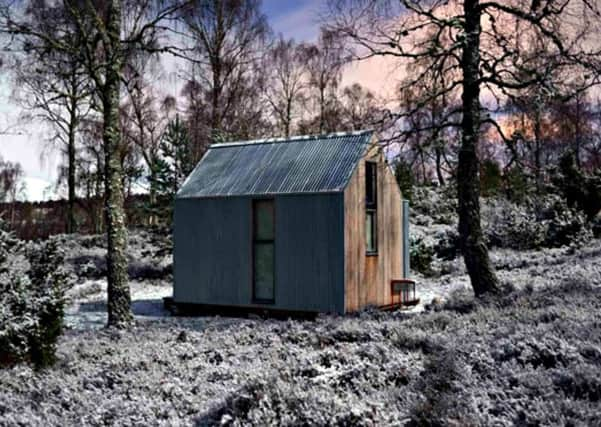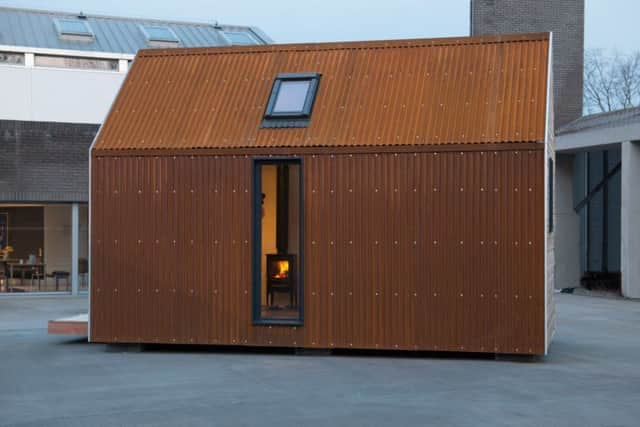600 Scots in running to create new hutting community


Reforesting Scotland said it was “overwhelmed” by the levels of interest in the plots in Carnock Wood in Fife which will be rented out to hutters in a pilot project.
The organisation is working to revive Scotland’s hutting culture which encourages people to retreat to small low-impact properties in natural settings for rest and recreation.


Advertisement
Hide AdDonald McPhillimy, of Reforesting Scotland’s Thousand Huts campaign, said: “It’s no secret to say where were overwhelmed in the amount of interest. We were pleasantly pleased. The response confirmed our feeling that there is a huge amount of interest out there.
“It just seems that this is the moment for hutting. It’s a zeitgeist.”
The 600 people who registered an interest in the Carnock Wood site will now attend an open day in Dunfermline next month to hear more details about the scheme.
Shuttle buses will run to the woodland which will be leased out by Forest Enterprise Scotland, a commercial arm of Forestry Commission Scotland.


Those who then want to take forward their application will enter a ballot with results likely to be known by the end of June, it is expected.
In light of the demand, 12 landowners, from areas including Argyll, Dumfries and Galloway and Fife, have also been invited to the Dunfermline event to discuss potential hutting sites on their property.
Advertisement
Hide AdMr McPhillimy added: “Even if people don’t get one of the 12 sites at Carnock Wood, there could well be a Plan B and a Plan C.”
Last year, the Scottish Government introduced new legislation to make it easier for people to build a simple hut for recreational use.
Advertisement
Hide AdA new building type for huts is now recognised by the planning process and, in effect, exempts huts from most building regulations.
It came after government consultation showed widespread support for hutting culture in Scotland, which was particularly popular among families from industrial cities in the first half of the 20th Century but which dipped away following the end of World War Two.
The biggest hutting site remains at Carbeth in Stirlingshire, where 140 huts can be found.
At Carnock Wood, successful applicants will build their own hut, which usually costs anything between £5,000 and £15,000 depending on materials used.
Each hut at Carnock, which will have no running water or electricity, will likely be serviced by its own compost toilet.
The hutters will enter a rental agreement with Forest Enterprise Scotland for their space in the wood, which is designed to be used at weekends and for holidays.
Advertisement
Hide AdThis cost has yet to be negotiated with hopes to keep the rental price as low as possible in order to make hutting open to many.
Reforesting Scotland is promoting ways how to keep hutting affordable, such as buying into a hut with friends and sharing the cost.
Advertisement
Hide AdRichard Heggie, director of planning consultancy Urban Animation, has recently advised on planning applications for three hutting sites across Scotland, including one near Falkland for 15 huts and one outside Perth for another 17 huts.
Three further applications are under development at present, Mr Heggie said,
He added: “There are a lot of positives surrounding hutting at the moment but there are also a few issues with the planning process, partly because I think it is a relatively new sort of proposal.
“There is a little bit of caution in some of the planning authorities and also in areas where huts are being proposed among those who are perhaps not exactly clear what hutting is really about.
“The usual concern is from people who see it as a new kind of development and who are worried it will cause a nuisance or damage the woodland or attract more traffic into an area.
“Most people who are into hutting just want a quiet time in the woods and somewhere where they can relax without high levels of noise. My impression so far from everyone I have spoken to is that hutters are interested in the environment, sustainable development and just getting back to nature.”
Advertisement
Hide AdMeanwhile, artist Bobby Niven and architect Iain MacLeod have brought a new simple cabin to market following the success of their small artist’s retreat in The Cairngorms.
The Artist Bothy, which costs from £39,000, is a prefabricated multipurpose space designed to bring its owners closer to nature.
Advertisement
Hide AdBuilt in Scotland, it is designed to work either as an off-grid space or be connected to electricity and water services. Made from Scottish larch, it is fully isolated with double glazing.
Niven and MacLeod, who are old school friends, built an artist’s residency space in an isolated spot near Aviemore in 2011.
It marked the beginning of the Bothy Project – a non-profit organisation that operates an network of residency spaces created in collaboration with artists, designers and makers.
Mr Niven said: “The success of Bothy Project showed us how much artists benefited from residencies and access to nature in our bothies, and the continuous demand for holiday stays confirmed that everyone, not just artists, benefited from time in these special spaces.”